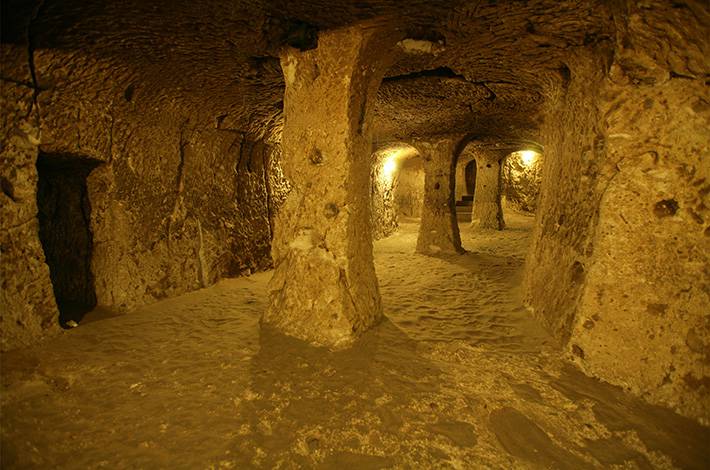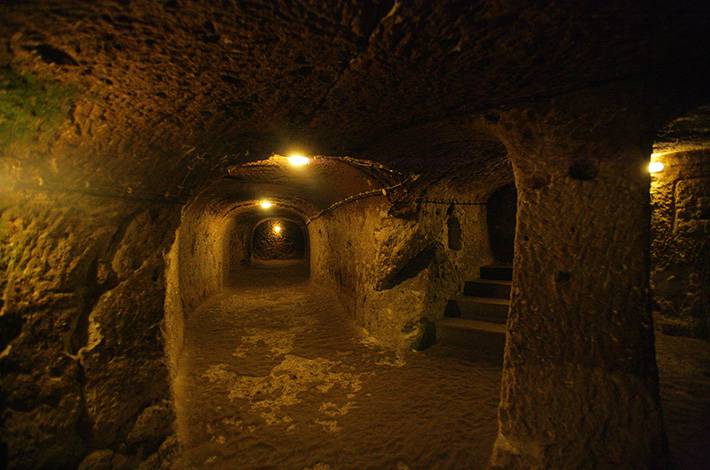Underground Cities of Cappadocia The number of underground settlements at various sizes, which are the most notable cultural assets of the Cappadocia Region, is estimated to be between 150 and 200. The majority of these rock settlements were constructed by the process of carving down soft tuff. The construction of underground cities was motivated by the desire for a secure refuge in the event of a threat or attack. Additionally, underground cities are preferred because they offer a cool environment in the summer and a warm environment in the winter. The underground city comprises hundreds of rooms, connected through extensive galleries and complex tunnels. Derinkuyu Underground City The Derinkuyu Underground City has an approximate depth of 85 metres. It comprises various sections, including stables, cellars, dining halls, churches, and a place for boiling molasses. Additionally, there is a missionary school on the second floor. The ventilation shaft, which is 55 metres deep and connected to the surface, is also used as a water well. Only ten percent of the underground city of Derinkuyu, which was opened to the public in 1965, can be visited today. The first carved floors of the underground cities are also the entrance floors, which were mostly used as stables. This is due to the difficulty of getting the animals to lower floors. Kitchens and şırahane, where grapes obtained from the region were processed and turned into wine or molasses, were constructed on the upper floors for the convenient transportation of grapes and other nourishment. Given the number of kitchens, it is evident that not every family had a kitchen, and the kitchens were used collectively. In the kitchens, there are stoves for cooking called "Tandoor," which are still used in towns and villages of Cappadocia.
DERİNKUYU UNDERGROUND CITY



